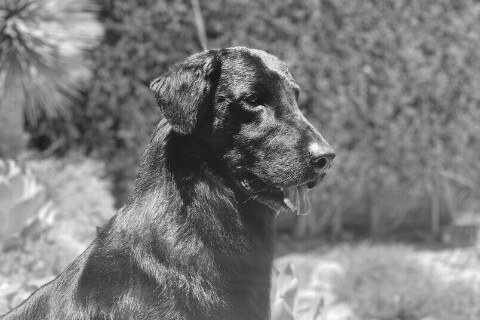
Head to Head and Heart to Heart: Understanding the Flat-Coated Retriever as a Utilitarian Retriever with a Happy Heart
Explore the Flat-Coated Retriever’s hallmark head, working build, and joyful spirit that define this enduring breed.
Home » Meet The Breeds » Flat-Coated Retriever
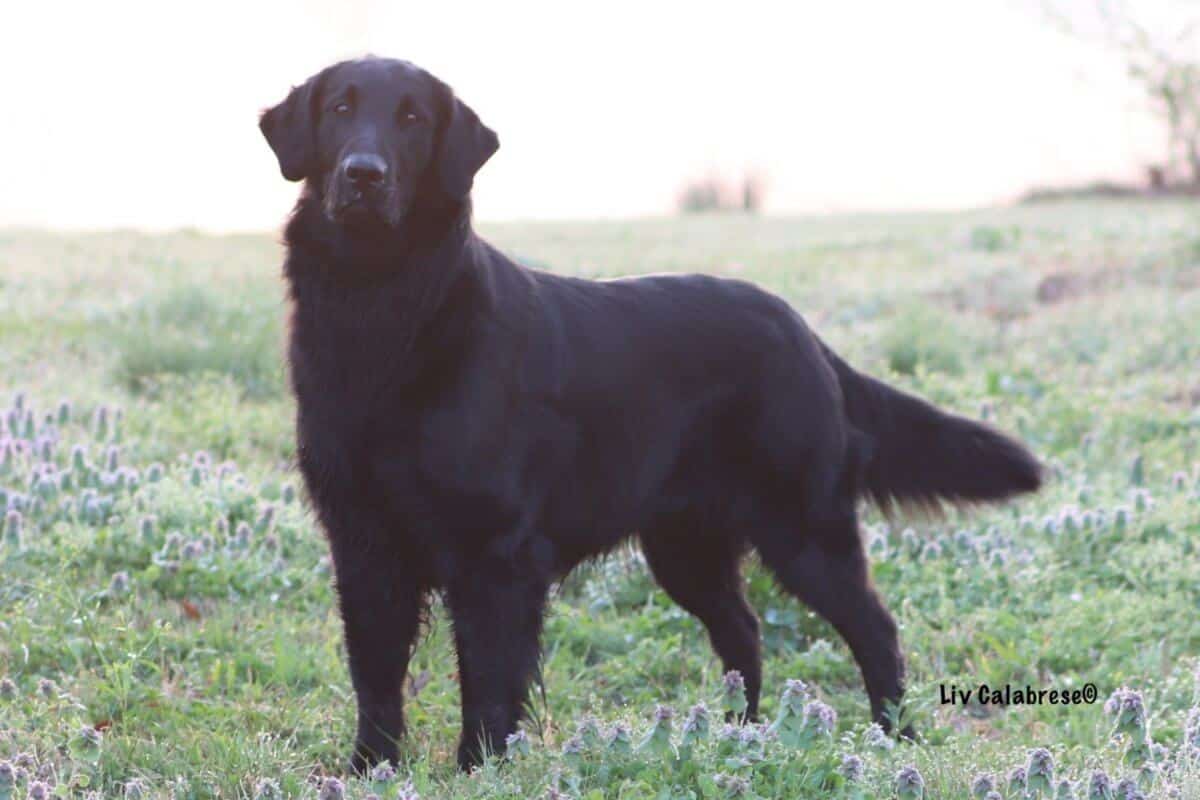

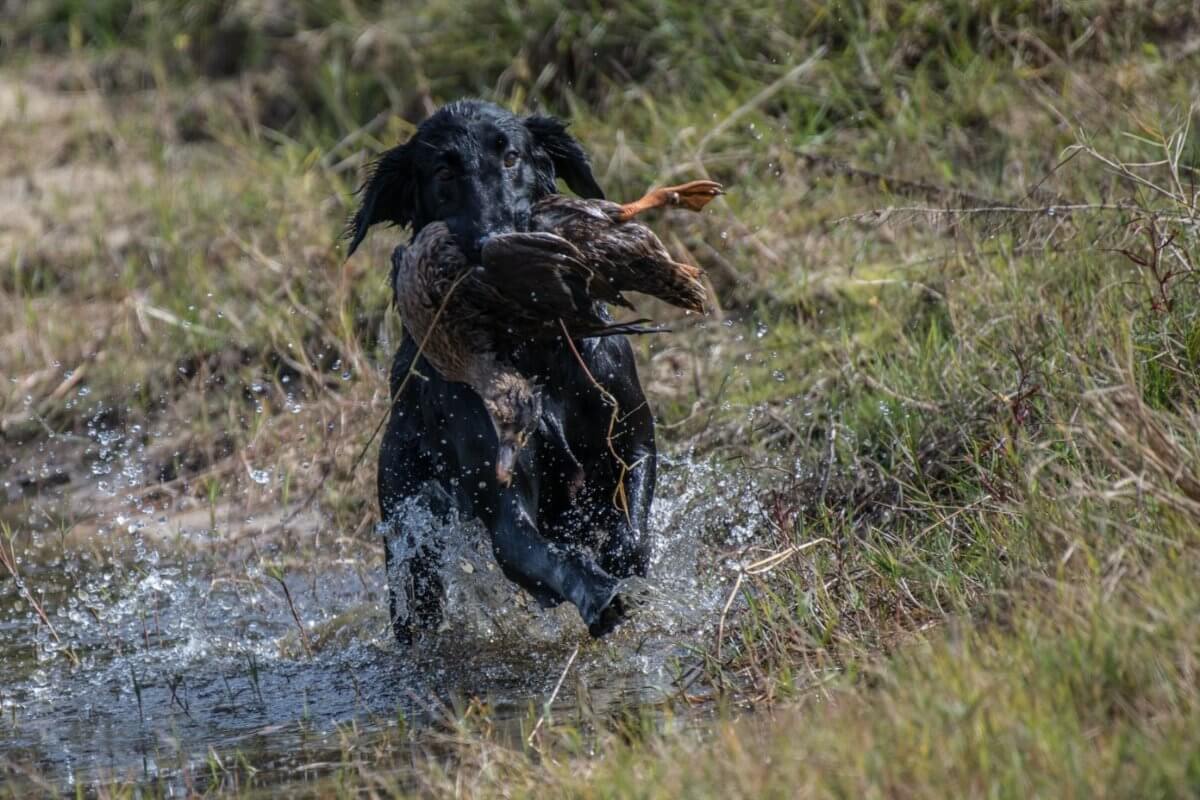
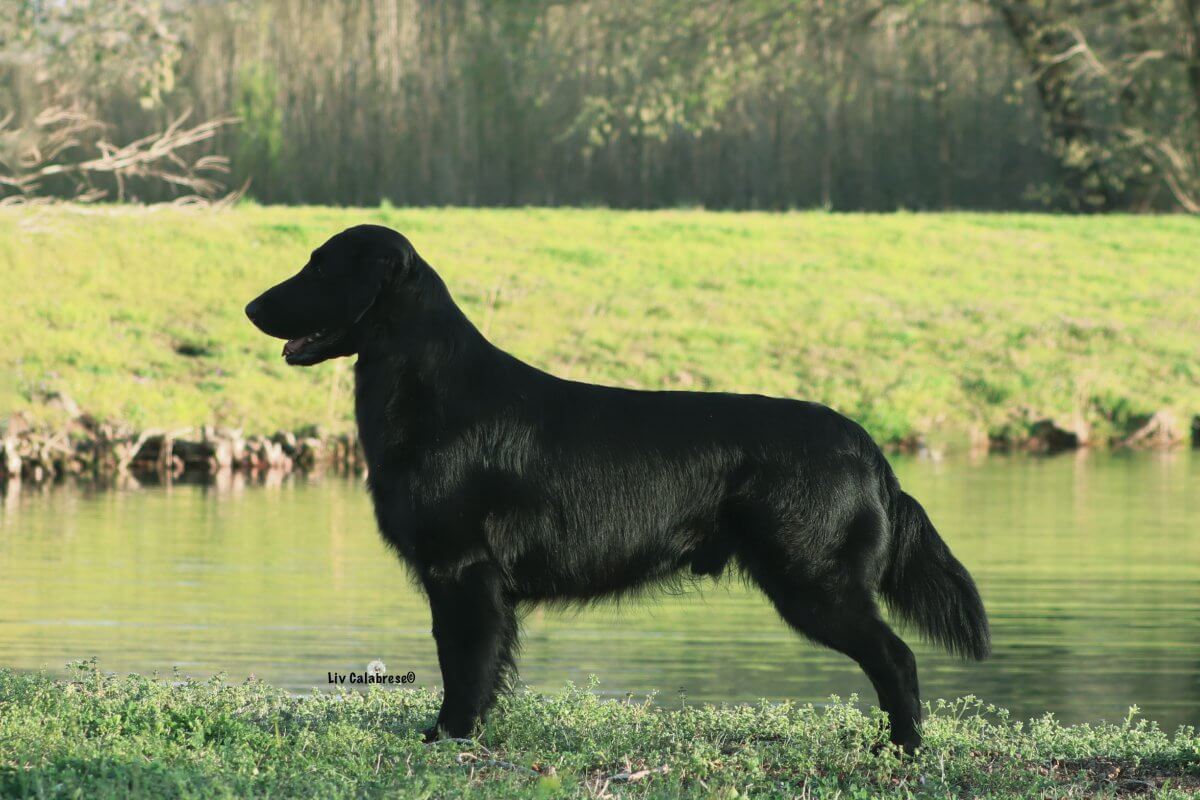
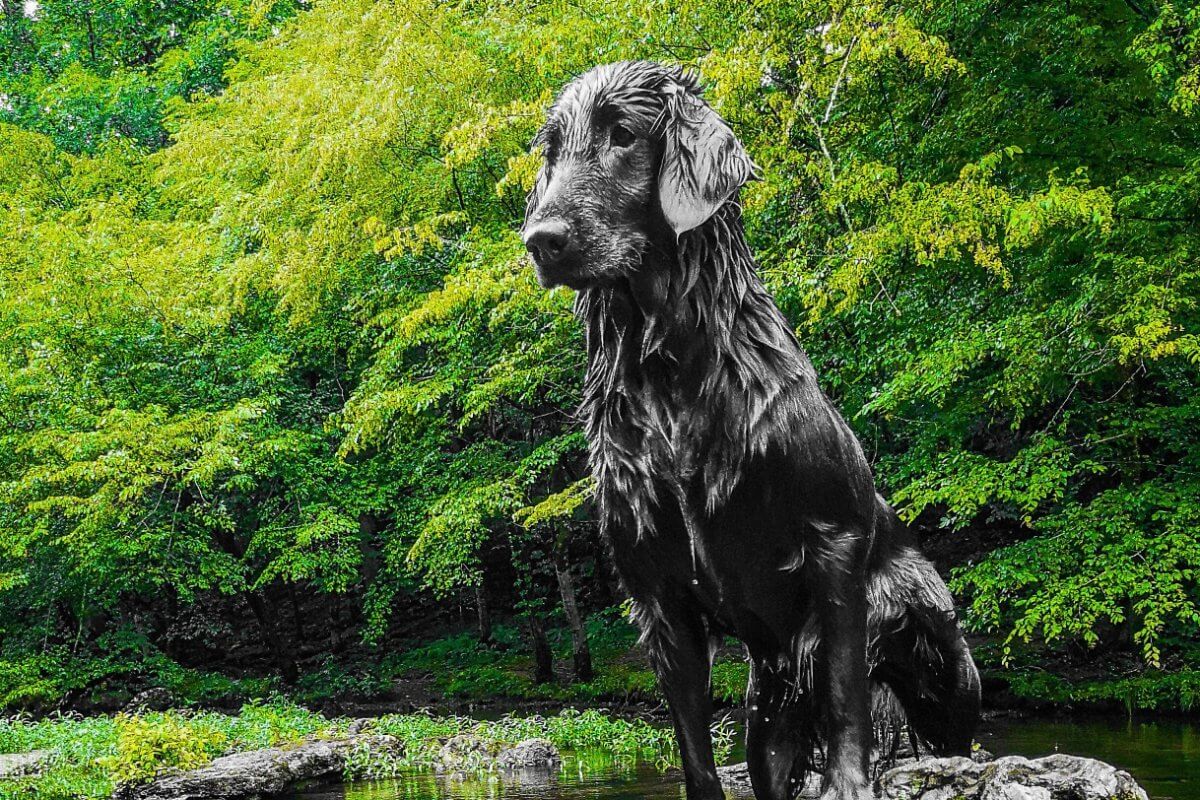
The Flat-Coated Retriever is a versatile and cheerful sporting dog known for its glossy solid black or liver-colored coat, balanced conformation, and perpetually wagging tail. Bred as a dual-purpose hunting companion, these dogs are renowned for their retrieving skills both on land and in water. With a playful, outgoing personality and an eagerness to please, the “Flat-Coat” is a beloved member of active households, excelling equally in the field and as a family companion.
Sporting
22 – 24.5 inches
60 – 70 pounds
8 – 10 years
| Country of Origin | England |
|---|---|
| Bred For | Hunting, Retrieving |
| Known For | Friendliness, Playfulness |
| Popularity | Moderate |
| Temperament | Optimistic, Cheerful, Good-Humored |
| Activities | Hunting, Running, Swimming, Conformation Shows, Dog Sports |
The Flat-Coated Retriever traces its origins to the United Kingdom in the mid-19th century, where it was developed to meet the growing demand for reliable and versatile hunting dogs. During this era, advancements in firearms increased the popularity of bird hunting, creating a need for dogs that were capable of retrieving both upland birds and waterfowl. The breed is believed to have descended from a mix of the now-extinct St. John’s Water Dog of Newfoundland, which provided retrieving abilities; Irish Setters, which contributed elegance and energy; and perhaps Collies, well-known for their intelligence and trainability.
Initially referred to as the “Wavy-Coated Retriever,” the breed’s coat evolved into a flatter, more streamlined texture through selective breeding. This coat not only enhanced the breed’s appearance but also offered practical advantages in the field, such as repelling water and providing protection against harsh conditions.
The Flat Coat’s popularity surged in the late 19th and early 20th centuries, especially among gamekeepers and hunters who valued its eagerness to work, natural retrieving instincts, and friendly disposition. During this period, the breed was a prominent figure in both hunting circles and early dog shows, earning accolades for its beauty and utility.
The American Kennel Club (AKC) officially recognized the Flat-Coated Retriever in 1915, further cementing its reputation as a reliable working dog and family companion in America. However, the breed faced a decline in popularity during the mid-20th century as other retriever breeds, such as the Labrador Retriever and Golden Retriever, gained prominence. This decline was exacerbated by the breed’s relatively smaller gene pool, leading to concerns about its future.
Male Flat-Coated Retrievers typically stand between 23 and 24.5 inches tall at the shoulder, while females measure slightly smaller, ranging from 22 to 23.5 inches. In terms of weight, Flat-Coats generally weigh between 60 and 70 pounds.
Flat-Coated Retrievers are well-balanced and exhibit a medium-sized, symmetrical build that emphasizes both power and elegance. Their bodies are slightly longer than tall, contributing to their flowing movement and efficiency in the field. Bone structure is strong yet never heavy, allowing the dog to maintain agility and stamina during long hours of retrieving.
Texture: The Flat-Coated Retriever’s coat is dense, weather-resistant, and lies flat against the body, with feathering adding elegance to its medium-length hair. The coat should always appear natural and should never be over-groomed or trimmed.
| Standard Color | |
|---|---|
| Black | y |
| Liver | y |
| Yellow | y |
Markings: No markings are recognized.
A Note About Color: The color of the Flat-Coated Retriever’s coat is either solid black or a solid liver. Yellow, cream, or any color other than black or liver are unacceptable in the breed.

The tail of the Flat-Coated Retriever is a natural and essential part of the breed’s silhouette. It is carried straight and level with the back, neither too high nor too low, and extends to a moderate length, reaching the hock. The tail is thick at the base, tapering slightly towards the tip, and is covered with dense feathering that matches the coat’s texture. The breed’s tail is never docked.
The Flat-Coated Retrievers is a joyful, active dog requiring a dedicated, active caretaker. Due to the breed’s puppy-like demeanor, which lasts a lifetime, this dog thrives in a home where it is included in daily family activities.
The Flat-Coated Retriever is a generally healthy breed, but like all dogs, individuals may be prone to certain genetic and environmental health conditions. The breed’s average lifespan ranges from 8 to 10 years, although some dogs may live longer with proper care and attention. Routine veterinary check-ups, a balanced diet, and regular exercise play critical roles in maintaining overall health.
Flat-Coated Retrievers may be predisposed to the following health issues:
Flat-Coated Retrievers are cheerful, friendly, and affectionate dogs, well-known for their “forever young” personalities. They form strong bonds with their families and thrive on human companionship, making them excellent family pets.
The breed’s playful nature makes it a wonderful choice for children, and it typically gets along well with other dogs. While Flat-Coats are welcoming to strangers, their social nature means they are better suited as greeters than guard dogs. Early socialization is key to ensuring good manners and confidence as an adult.
Flat-Coated Retrievers thrive on a high-quality diet tailored to the dog’s age, size, and activity level. To support steady growth and joint health, puppies benefit from a large-breed puppy formula divided into three to four small meals daily.
Adult Flat-Coats typically require 2.5 to 3.5 cups of dry kibble per day, split into two meals. Monitoring their weight and adjusting portions as needed helps to prevent obesity, a common issue for this food-loving breed. To reduce the risk of bloat, avoid feeding immediately before or after exercise.
Flat-Coated Retrievers are intelligent and eager to please, making them highly trainable with the right approach. Positive reinforcement methods, like treats and praise, are most effective, as these dogs respond poorly to harsh corrections.
The breed’s playful nature can sometimes lead to moments of distraction, particularly during adolescence, so patience and consistency are key. Early socialization and recall training are essential to manage a dog’s energy, prey drive, and tendency to bark when excited. Keeping training sessions engaging and varied helps to maintain a Flat-Coat’s interest and encourages good behavior.
Flat-Coated Retrievers are high-energy dogs that require at least one to two hours of daily exercise. They thrive on activities that challenge their physical and mental abilities, such as hiking, swimming, and playing fetch.
| Energy Level | High |
|---|---|
| Exercise Requirements | 2 Hours/Day (Minimum), Daily Walks, Weekly Swimming, Vigorous Running, Playing with Another Dog, Mental Stimulation |
The breed’s natural retrieving instincts and love of water make outdoor adventures especially enjoyable. Regular exercise not only keeps these dogs physically fit but also prevents the kind of boredom that can lead to destructive behaviors.
Flat-Coated Retrievers have relatively low grooming needs despite the breed’s luxurious appearance. Weekly brushing, especially through the feathering, is generally sufficient to keep the coat healthy, reduce shedding, and prevent tangles.
| Coat Type | Dense, Flat, Medium Texture |
|---|---|
| Grooming Requirements | Weekly Brushing, Occasional Bathing, Routine Ear Cleaning, Periodic Nail Trimming, Regular Tooth Brushing |
Since the coat of this breed is naturally water-resistant, bathing is only required when absolutely necessary. Routine care, including nail trimming, ear cleaning, and teeth brushing, help to maintain overall health and good hygiene.
Flat-Coated Retrievers adapt well to various living environments but are best suited for homes with outdoor space where they can run and play. While these dogs can live in apartments, their high energy levels require regular outdoor exercise to keep them happy and healthy.
The social and affectionate nature of the breed means these dogs thrive as part of an active family. They need to be included in daily activities, as they don’t do well when left alone for long periods.
Flat-Coated Retriever puppies are bundles of energy and curiosity, bringing joy and excitement to their new homes. Their playful and friendly personalities make them a pleasure to raise, but consistent care, training, and socialization are essential for them to grow uo to become well-behaved adults.
Caring for a Flat-Coated Retriever puppy begins with creating a safe and structured environment. Puppy-proofing the home by removing potential hazards, such as small objects and toxic plants, will ensure the little one’s safety.
Socialization during the puppy stage is vital to help the puppy become confident and well-adjusted as it matures. Introducing new people and dogs in controlled environments will nurture the pup’s natural friendliness.
Early training using positive reinforcement helps to channel the young Flat-Coat’s intelligence and eagerness to learn. Sessions should be kept short and engaging, focusing on basic commands and impulse control. Gentle play and short walks are ideal for exercise and support developing joints.
A high-quality large-breed puppy food, divided into three to four meals daily, supports growth and development. Monitor weight gain to avoid overfeeding, as rapid growth can lead to joint issues.
Introduce grooming routines early on to familiarize the puppy with brushing, nail trimming, and ear cleaning. With attentive care, the puppy will blossom into a loyal and loving companion that looks forward to its weekly grooming regimen.
The Flat-Coated Retriever is recognized by the world’s leading registries and kennel organizations, which categorize the breed into a specific Group based on its unique characteristics. This breed is recognized worldwide under the following Group designations:
| Organization | Group Designation |
|---|---|
| AKC (American Kennel Club) | Sporting |
| UKC (United Kennel Club) | Gun Dog |
| CKC (Canadian Kennel Club) | Sporting Dogs |
| ANKC (Australian National Kennel Council) | Gundogs |
| RKC (The Royal Kennel Club) | Gundog |
| FCI (Fédération Cynologique Internationale) | Group 8 – Retrievers-Flushing Dogs-Water Dogs; Section 1 – Retrievers |
The ideal Flat-Coated Retriever is described by a Breed Standard that is approved by each of the world’s leading registries and kennel organizations. The Breed Standards for this breed may be found in the following links:
| Organization | Breed Standard |
|---|---|
| American Kennel Club | AKC Flat-Coated Retriever Breed Standard |
| United Kennel Club | UKC Flat-Coated Retriever Breed Standard |
| Canadian Kennel Club | CKC Flat-Coated Retriever Breed Standard |
| Australian National Kennel Council | ANKC Flat-Coated Retriever Breed Standard |
| The Royal Kennel Club | RKC Flat-Coated Retriever Breed Standard |
| Fédération Cynologique Internationale | FCI Flat-Coated Retriever Breed Standard |
Flat-Coated Retriever rescue groups are committed to assisting dogs in need, whether they have been surrendered, abandoned, or displaced. These organizations work to match each dog with a loving home that understands and meets the breed’s unique needs.
Yes, Flat-Coated Retrievers shed moderately throughout the year, with heavier shedding during seasonal changes. Regular brushing helps to control loose hair and keeps their glossy coat in top condition.
No, Flat-Coats are not hypoallergenic. Their shedding and dander can trigger allergies in sensitive individuals.
Flat-Coated Retrievers have a lifespan of approximately 8 to 10 years. Some may live longer with proper care, a healthy diet, and regular veterinary check-ups.
Yes, Flat-Coated Retrievers are excellent family dogs, known for their affectionate and friendly nature. They get along well with children and thrive in active households that include them in daily activities.
Flat-Coated Retrievers tend to bark when they are excited or to alert their human companions. While not excessive barkers, early training can help to manage any vocal tendencies.

Explore the Flat-Coated Retriever’s hallmark head, working build, and joyful spirit that define this enduring breed.

Explore the history, purpose, and versatile traits of the Flat-Coated Retriever, a breed renowned for its elegance and work ethic.
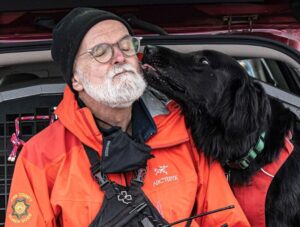
Interview with Jonathan Izant, handler of a Search and Rescue Dog known as “Lincoln,” the 2022 AKC Humane Fund ACE Award Winner.

Comprehensive look into the rich history of the Flat-Coated Retriever, including the breed’s beginnings and its original function.
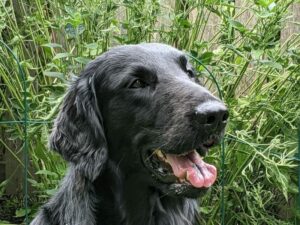
In-depth explanation of what the head and silhouette of the Flat-Coated Retriever (referred to as the Flat-Coat) should ultimately look like.
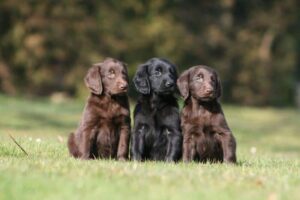
Top breeders spend their free time thinking and breathing Flat-Coat Retrievers. That commitment to our breed has protected it from harm.
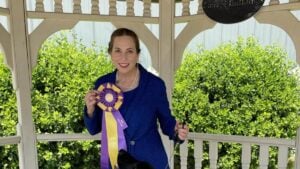
Sue Sommerfield shares 48 years of insight into Flat-Coats, Dalmatians, breeding, training, and the future of purebred dogs.

Carolee Anita Boyles shares her journey in Flat-Coats, breeding ethics, judging, and the evolving culture of the dog show world.
The best way to ensure a long and happy relationship with a purebred dog is to purchase one from a responsible breeder. Not sure where to begin?
Contact the National Parent Club’s Breeder Referral Program, which is listed on the AKC Breeder Referral Contacts page.
